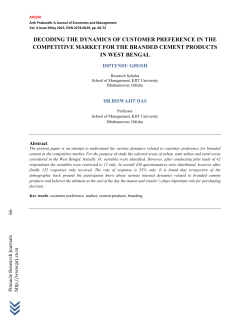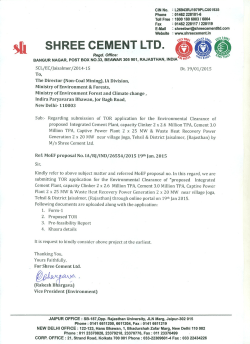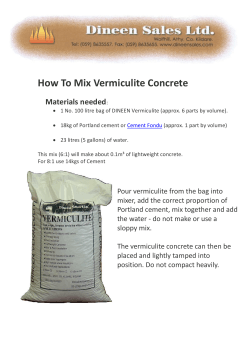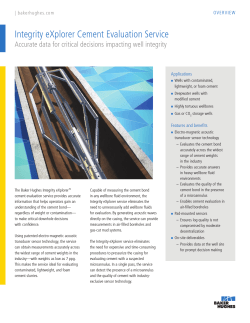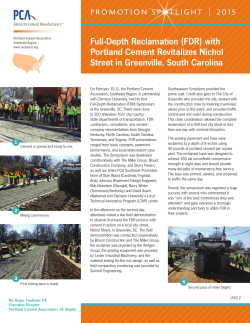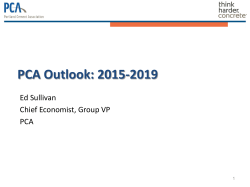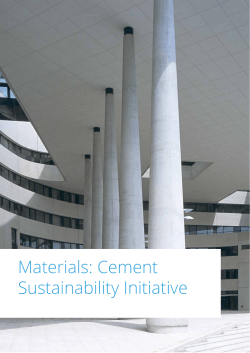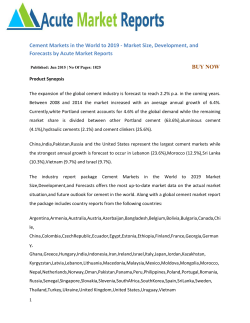
PT Indocement Tunggal Prakarsa TBK (INTP:IJ)
COMPANY NOTES PT Indocement Tunggal Prakarsa TBK (INTP:IJ) Bayu Cahyadi bayu.cahyadi@profindo.com MARKET CAP IDR 80.4 TRILLION SHARES OS 3.7 BILLION SHARES CURRENT PRICE IDR 21850/SHARE TARGET PRICE IDR 22100/SHARE UP/DOWNSIDE 1.14%% RATING NEUTRAL HOPING FOR INFRA PROJECTS Indocement, the second largest cement producer in Indonesia, may face difficult year ahead due to slower demand from property sector, more competitors coming and lower average selling price. However, infrastructure development may become the hope for cement industry. We expect that cement demand for infrastructure to double, +6 million ton next year. While the company will finish its 4.4 million ton expansion at the end of 2015, the contribution can be felt in 2016. We estimate that the fair value of equity for the company should be at IDR 22100/share. FY14 Result: Revenue Up 7%, Net Profit Up 5% FY14, Indocement was successfully inked better result: Revenue up 7% YOY, to IDR 19.99T while net profit was up ~5% YOY to IDR 5.27T. The net profit growth was lower than the revenue due to weak Rupiah, higher electricity and logistic tariffs. Market share in Java was drop 1% to 38.8% due to significant decrease in Banten area by -7.8% as Krakatau-Posco project was completed. On the other hand, market share outside Java increased by 1.2% especially in Sulawesi (+5.9%) and East of Indonesia (+6.1%). Overall, the company kept its market share at 30.4% in Indonesia. More Bulk Cement Demand Historically, Bag Cement demand was always bigger than bulk cement (~7984% bag vs 21-16% bulk). However, due to government’s aggressive infrastructure program, we believe that the demand for bulk cement will go up significantly. While infra budget for 2015 is almost double from ~150T Rupiah to 290T Rupiah, we estimate that there will be additional of at least 6 million ton cements in 2015. This is positive for the whole industry due to oversupply condition lately. Bulk Cement vs Bag Cement 100% 80% 60% Bulk 40% Bag 20% 0% 2008 2009 Source: Company estimation, ASI March 20, 2015 www.profindo.com 2010 2011 2012 2013 2014 PT Indocement Tunggal Prakarsa Tbk Company’s Strategy due to Lower ASP After our government lowers the cement price by 5%, Indocement has been doing efficiency in its operation such as using more slag than clinker. Clinker usage ratio will be lower by using more slag. The company stated that it already has a slag contract with Posco and Indoferro. We believe that the margin will improve in 2015. Moreover, electricity tariff has been reduced by our government due to lower oil price. Nonetheless, low coal price may also help company to maintain its margin. Valuation We estimate that the industry may grow ~5% this year, supported by aggressive government’s infra program and better environment for property (tendency for lower interest rate). Thus, we estimate that the fair equity value of Indocement to be at 22.100/share, 15.01x PE FY15F, 2.75% upside potential. Net cash position is really good for the company as uncertainty in the cement industry goes up. Page |2 PT Indocement Tunggal Prakarsa Tbk KANTOR PUSAT KANTOR CABANG BANDUNG http://www.profindo.com Gedung Permata Kuningan, Lt. 19 Jl. Kuningan Mulia, Kav. 9C, Guntur Setiabudi Jakarta Selatan 12980 Phone : +62 21 8378 0888 Fax : +62 21 8378 0889 Jl. Sunda No. 50B Bandung, Jawa Barat Phone : +62 22 420 2678 Fax : +62 22 420 2676 EMAIL : bayu.cahyadi@profindo.com abdul.aziz@profindo.com DISCLAIMER This research report is prepared by PT PROFINDO INTERNATIONAL SECURITIES for information purposes only and is not to be used or considered as an offer or the solicitation of an offer to sell or to buy or subscribe for securities or other financial instruments. The report has been prepared without regard to individual financial circumstance, need or objective of person to receive it. The securities discussed in this report may not be suitable for all investors. The appropriateness of any particular investment or strategy whether opined on or referred to in this report or otherwise will depend on an investor’s individual circumstance and objective and should be independently evaluated and confirmed by such investor, and, if appropriate, with his professional advisers independently before adoption or implementation (either as is or varied). Page |3
© Copyright 2025
